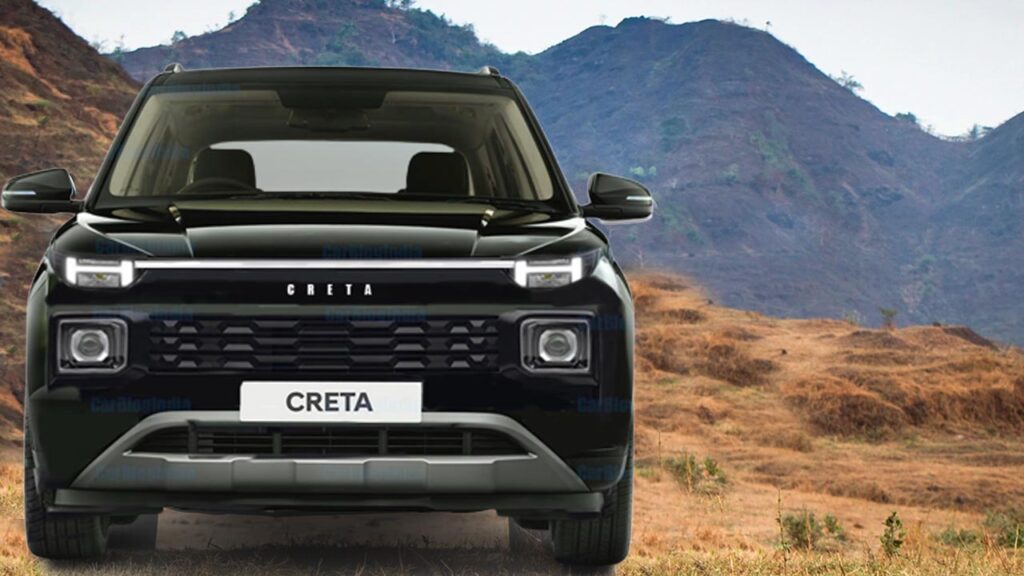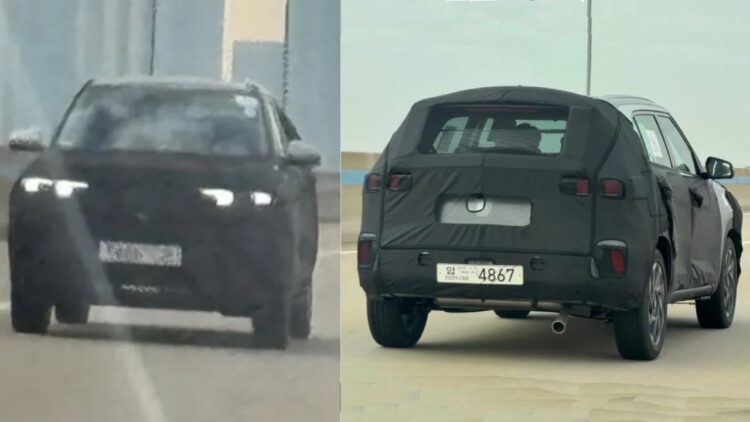The Hyundai Creta EV was recently seen undergoing road test in South Korea. Interestingly, the test mule featured an end-can in what could be an attempt to confuse the media. However, we can say with assurance that the test mule is that of the electric version. Our confidence is on the basis of careful observation of the latest spy media, which reveals the battery pack beneath the floor. Another interesting bit here is that unlike the electric Creta seen in India, this one isn’t based on the pre-facelift.
You may also like: Hyundai Creta Facelift to Get Exter-Like Fascia, EV Variant in Pipeline
Hyundai Creta EV to Borrow Powertrain from Kona Electric
In spite of the heavy camouflage, the test mule exposes its headlamps. The new lighting pattern and positioning of these reveal that this isn’t based on the current India-spec model. Our guess is that the carmaker could be testing the EV powertrain on the upcoming facelift meant for our market. In fact, last month, in an exclusive report, we revealed that the electric version would launch with the facelift. Moreover, we even revealed that the new model would share its powertrain with the Kona Electric. Basically, the South Korean auto giant plans to use a tried-and-tested powertrain on one of its most successful cars ever.
You may also like: Honda Elevate vs Hyundai Creta Specs, Dimensions & Features Comparison
Converting the existing ICE cars into EVs is a common practice many car marques follow. Through this, they easily leverage the popularity of the ICE model and save on R&D by not developing an EV from the scratch. The Tata EVs are a good example of this. Our sources inform us that the arrival of the Hyundai Creta EV would coincide with the discontinuation of the Kona Electric. The latter features a 39.2 kWh Lithium-ion polymer battery pack that powers a Permanent Magnet Synchronous Motor (PMSM). Peak output is rated at 136 PS and 395 Nm. An AC home charger can recharge the battery pack from 0 to 100% in around 6 hours 10 minutes. With a 50 kW DC fast charger, the battery can gain 80% charge from 0 in just 57 minutes. As per ARAI, the Kona Electric has a driving range of 452 km on a full charge.
You may also like: Upcoming EV Variants of 5 Popular SUVs – Hyundai Creta to Tata Harrier

You may also like: India’s Only All-Green Hyundai Creta Looks Hulk-Inspired
What We Think
Recognizing the inevitability of electrification, we witness a global shift towards carbon neutrality. Both traditional and emerging automakers outline ambitious plans for a carbon-neutral future. Hyundai plays a leading role in this transition, evident in their global EVs like the IONIQ 5 and IONIQ 6. Meanwhile, transforming existing vehicles into electric counterparts appears to be a pragmatic approach for broader market reach. This is true especially for price-conscious market like ours. The future promises intriguing developments, and we eagerly anticipate Hyundai’s contributions to the evolving automotive landscape.



